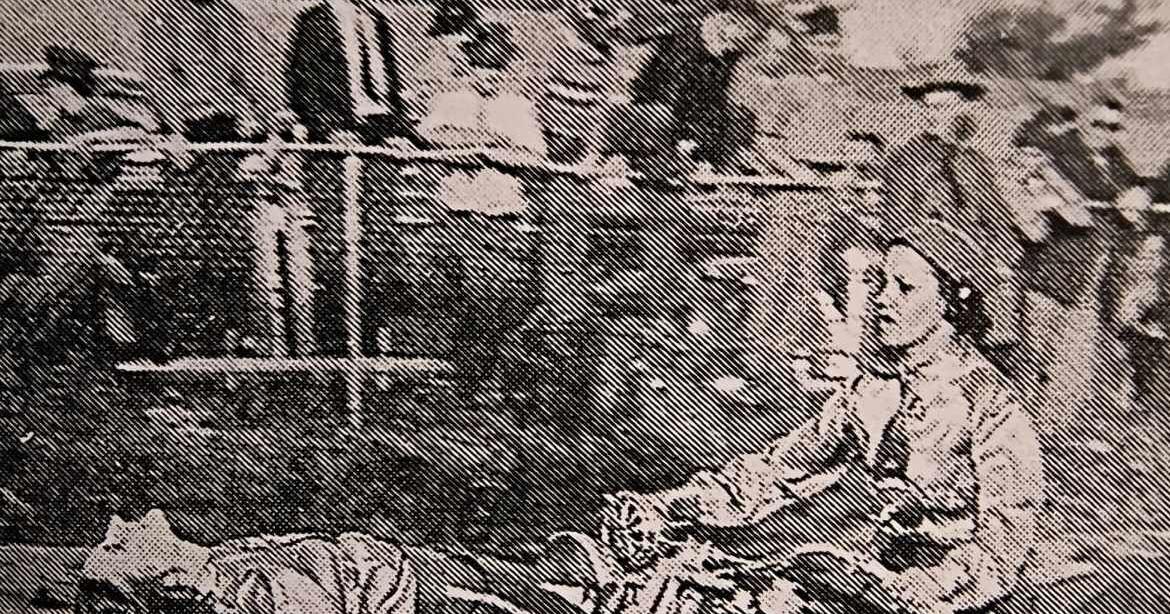
Waterloo has a rich history of innovators and pioneers. One of the unsung examples of this is Louise Menzer Scherbyn, one of the first female motorcyclists in the United States and founder of multiple women’s motorcycle clubs and the Women’s International Motorcycle Association in the 1930s and ’40s.
Louise came by her adventurous nature from her father, William Menzer, a local barber with a flair for publicity. One of his more flamboyant acts involved shaving a pilot of a bi-plane while it was flying over the town. Another time, Menzer was hoisted up the town’s water tower to give one of the painters a shave and a haircut. He was a vital part of the Waterloo community, giving free haircuts to children and participating in many charitable events.
William and Marguerite Menzer were part of a strong German immigrant community in Waterloo. They had five children, the youngest being Louise, who grew up watching her father’s antics and developed a sound understanding of the importance of publicity to promote a cause.
In 1930, 27-year-old Louise married another first-generation American, George Scherbyn of Phelps. George’s parents were from the Netherlands, which possibly gave him a more progressive view of life. George loved to go out on his motorcycle (an Indian), and Louise loved to accompany him — though in a sidecar, as was proper for a woman at that time.
One weekend in 1932, the couple was traveling in the Adirondacks when a trail became so narrow, the sidecar wouldn’t fit. George took a wrench and disassembled the sidecar. With a bit of trepidation, Louise hopped up behind George and became thrilled at the sensation of traveling through nature on the motorbike instead being a passive passenger in a jostling sidecar.
A bike of her own
When an Indian Pony motorcycle became available at a local dealer, George encouraged Louise to get it. At first, she was concerned about what others might think, but George continued to encourage her to take the leap. Louise finally assented and never looked back.
There were many stumbling blocks in the way of women riding their own motorcycles. All the organizations for biking women were auxiliaries designed for women who rode in tandem with men, not for women who drove their own bikes.
Another impediment was the lack of proper riding clothes. It was obvious that skirts were impractical. Some women tried to use split skirts and culottes, but given the physical nature of bike riding, pants were the only option. Women bike riders began designing their own riding gear. Louise designed an outfit that matched her white Pony. At rallies and conventions, the women were given awards for the best outfits.
Louise was a petite woman who was only 5 feet tall and barely weighed 100 pounds. She was a striking figure in many photos where she was the only woman in a large male crowd. While she was a strong advocate for women riders, she always made sure she was presented in a proper manner. She was a cautious driver who never sped and was very conscious of her public appearance. She signed all her correspondence as “Mrs. George Scherbyn.”
In 1937, a horrible event changed Louise’s life forever.
Louise and George had a home in Rochester, where they both worked. Louise’s mother had died, and she was heading to Waterloo to check on her father. A large branch was lying across the road, barring her path. When she got off her bike to move the limb, four brothers (who lived nearby and were known to Louise) jumped out of the woods and sexually assaulted her.
Given the time period, it would have been easy for Louise and George to shut themselves away and say nothing. Sadly, that is what still happens even today.
That is not what the Scherbyns did.
Charges were pressed and a trial was held. Louise kept all the articles from this disturbing period, just as she did for all other events in her life. The perpetrators were found guilty and sent away, but the press was not kind to Louise. She was referred to as a “wild woman” who engaged in manly activities.
She never felt comfortable at her Rochester home again. She began to take long rides across the country. I’m not an expert on post-traumatic stress syndrome, but I can see that these rides might have been a therapeutic release for Louise as she coped with the brutalization she had undergone.
Louise went on to log more than 25,000 miles on her bike and focused her energies on promoting women’s access to the sport. Meanwhile, George never stopped supporting his wife. He eventually became president of the local sportsman’s club. Louise used the skills she had learned at her father’s knee and promoted motorcycling activities across the country. However, Louise always returned to Waterloo and Maple Grove Raceway for daredevil exhibitions and rallies.
She eventually realized her dreams and founded a motorcycling association for women that was completely independent of any men’s organization, the Women’s International Motorcycle Association. Louise is also in the Indian Motorcycle Hall of Fame.
The next time you see motorcycles on the road, remember Louise Scherbyn and the passion she had for the sport.
